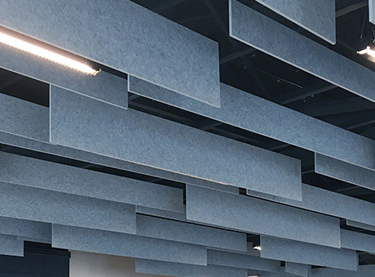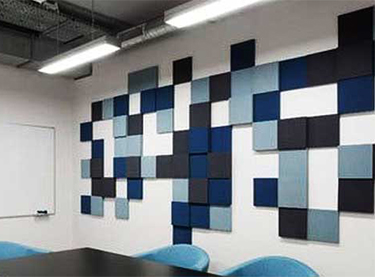Can Felt Panels Bridge the Gap Between Acoustic Functionality and Modern Design Aesthetics?
2025-10-10
In the evolving landscape of interior materials, felt panels—once confined to school bulletin boards and industrial soundproofing—are emerging as a versatile star, redefining how spaces balance functionality and beauty. Driven by a surge in demand for acoustically optimized environments, a renewed focus on sustainable materials, and a design culture that prizes texture over uniformity, these soft, fibrous panels are transforming from niche utilities to must-have elements in residential, commercial, and public spaces. Insights from manufacturers like U.S.-based Designtex, German textile innovator Kvadrat, and market analysts at Grand View Research reveal how felt is shedding its utilitarian past to claim a central role in 21st-century design.

From Bulletin Boards to Architectural Statements
Felt’s resurgence traces back to its unique properties: it absorbs sound, dampens echo, and adds warmth to hard-surfaced rooms—qualities increasingly critical as open-concept layouts dominate offices, cafes, and homes. But what truly propels its popularity is its aesthetic adaptability. Unlike rigid acoustic tiles or cold metal panels, felt’s soft, tactile surface introduces organic texture, making it a favorite of designers seeking to “humanize” modern spaces.
Addressing Niche Demands with Specialization
As demand grows, manufacturers are tailoring felt panels to specific industries. In healthcare, where infection control is paramount, Spanish company Textil Santanderina offers “MedFelt” panels with antimicrobial coatings that inhibit mold and bacteria growth—ideal for hospitals or dental clinics. In retail, U.K. brand Camira has developed “LightFelt,” a lightweight, fire-resistant variant used in pop-up displays and store fixtures, where quick installation and compliance with safety codes are critical.
Even the automotive sector is exploring felt’s potential: German automaker BMW recently tested wool-felt door panels in its electric iX model, citing improved cabin acoustics and a “warmer, more premium feel” compared to plastic alternatives.
The Future of Felt: Blending Tech and Tradition
Looking ahead, industry experts predict felt panels will increasingly integrate smart technologies. Kvadrat is prototyping panels with embedded LED strips that illuminate patterns within the felt, while Designtex is experimenting with conductive fibers that turn felt into touch-sensitive surfaces for interactive walls.
“Sustainability, versatility, and sensory appeal make felt a material of the moment,” says Marquez. “But its future lies in how well we can merge its organic charm with the innovations of tomorrow—whether that’s smart features or even more eco-conscious production methods.”
In a world where design is no longer about choosing between form and function, felt panels are proving that some materials can excel at both. As they transition from hidden utilities to visible stars, the question now is not if felt will remain relevant—but how creatively it will shape the spaces we live, work, and connect in.

























































